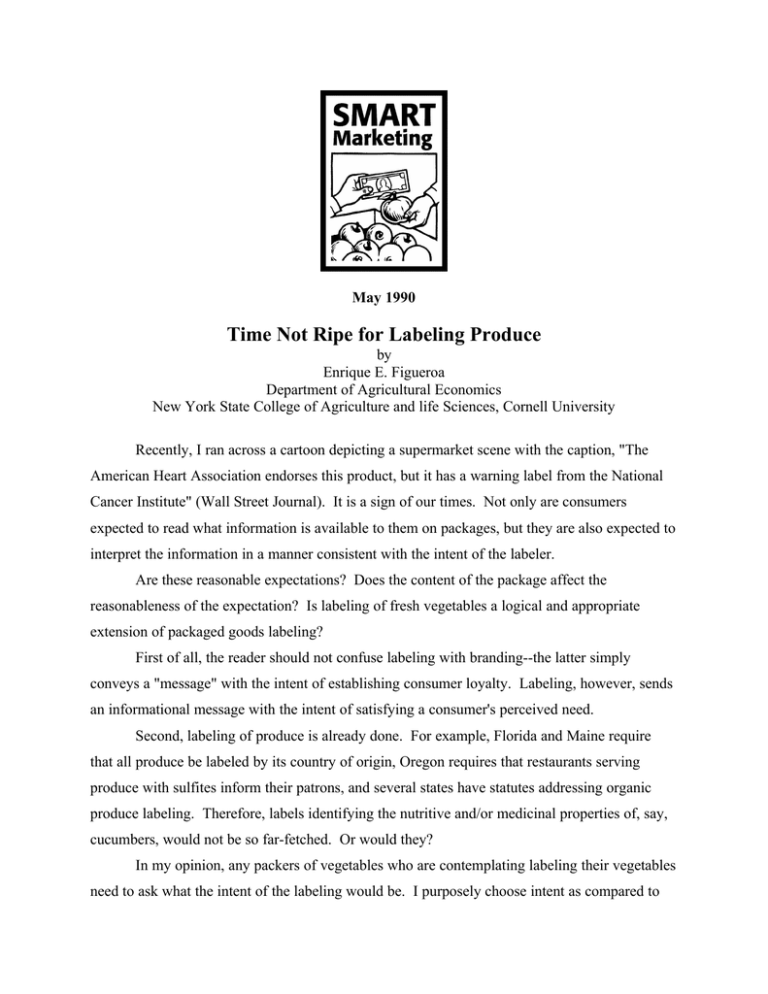Time Not Ripe for Labeling Produce
advertisement

May 1990 Time Not Ripe for Labeling Produce by Enrique E. Figueroa Department of Agricultural Economics New York State College of Agriculture and life Sciences, Cornell University Recently, I ran across a cartoon depicting a supermarket scene with the caption, "The American Heart Association endorses this product, but it has a warning label from the National Cancer Institute" (Wall Street Journal). It is a sign of our times. Not only are consumers expected to read what information is available to them on packages, but they are also expected to interpret the information in a manner consistent with the intent of the labeler. Are these reasonable expectations? Does the content of the package affect the reasonableness of the expectation? Is labeling of fresh vegetables a logical and appropriate extension of packaged goods labeling? First of all, the reader should not confuse labeling with branding--the latter simply conveys a "message" with the intent of establishing consumer loyalty. Labeling, however, sends an informational message with the intent of satisfying a consumer's perceived need. Second, labeling of produce is already done. For example, Florida and Maine require that all produce be labeled by its country of origin, Oregon requires that restaurants serving produce with sulfites inform their patrons, and several states have statutes addressing organic produce labeling. Therefore, labels identifying the nutritive and/or medicinal properties of, say, cucumbers, would not be so far-fetched. Or would they? In my opinion, any packers of vegetables who are contemplating labeling their vegetables need to ask what the intent of the labeling would be. I purposely choose intent as compared to purpose, objective, or reason because intent assumes a sense of responsibility that the other three words do not. In the context of our times--concern about food safety and whose responsibility it is to assure food safety--it is imperative that the information provided by a packer on a label be consistent with the intent of the label. In other words, if the intent of the label is to alert a consumer, then the label should be formatted to ALERT! consumers. If the intent is to use labeling as a promotional vehicle, then it should be made clear that the informational content is secondary to the promotional angle. And if the intent is to inform, then the information should be precise, concise, and accurate. Given the above, should vegetable packers label their produce? At this point, my answer is no--not even the container (if someone does choose to label, then he or she must make sure that the label meets all regulatory requirements). On the other hand, future labels—individual stickers--which identify the principal vitamins, minerals, and/or protein and their corresponding levels in the produce item should be considered. I say in the future because there is currently too much attention focused on food labeling and therefore the public may perceive it as a gimmick rather than a sincere desire to inform the consumer.



